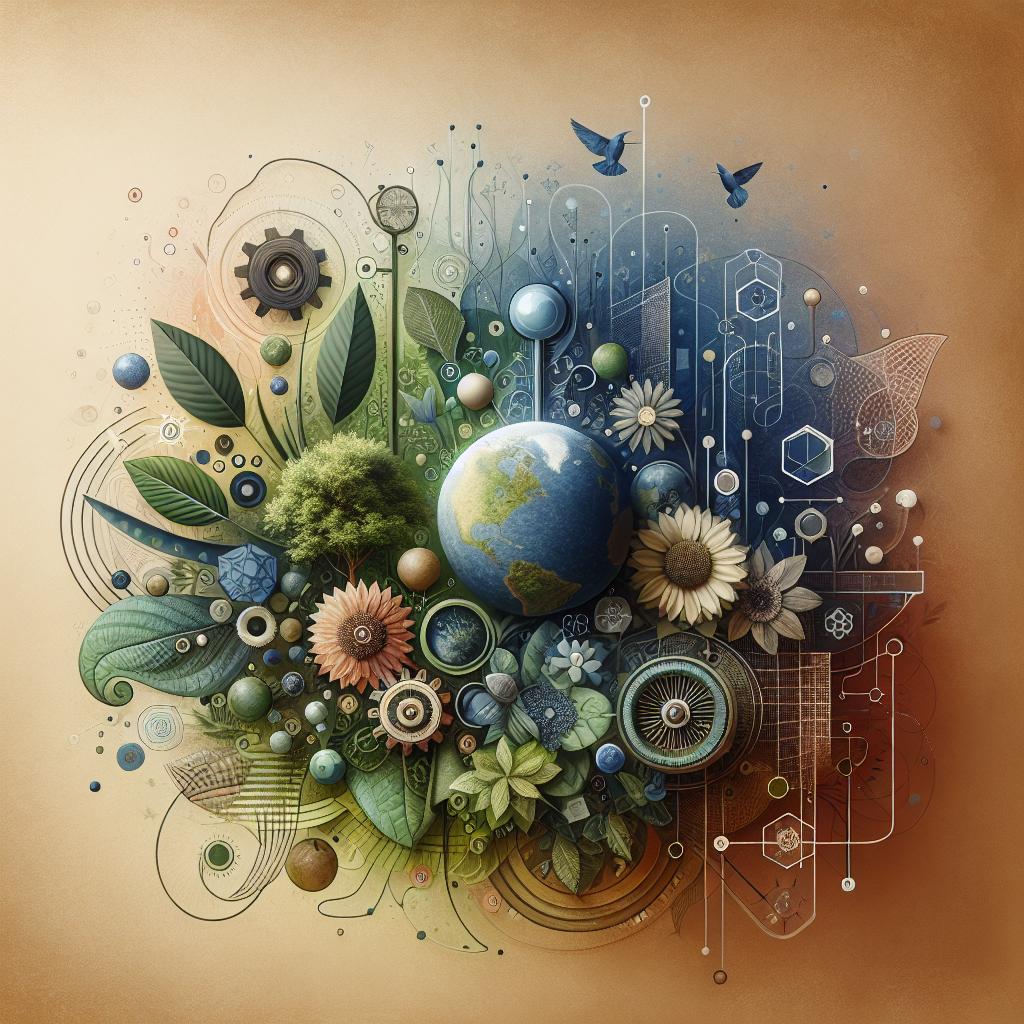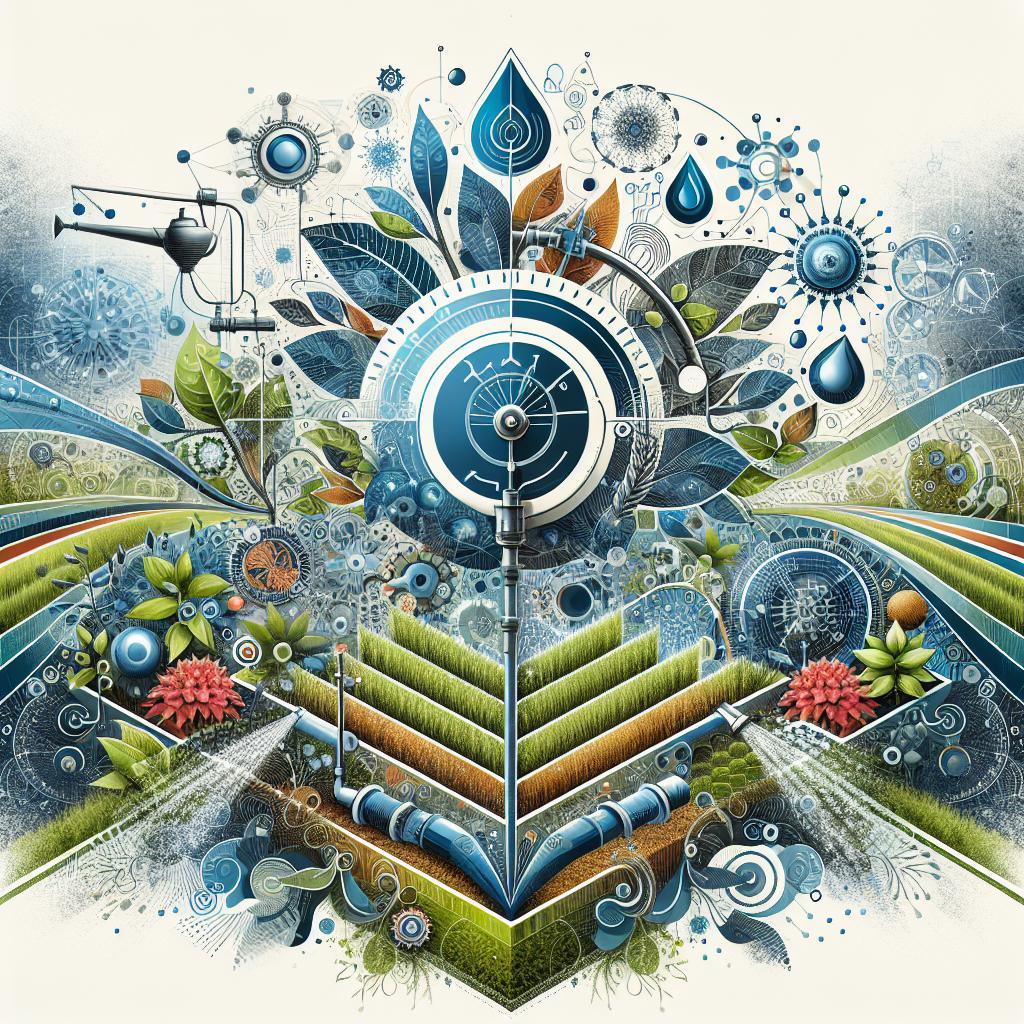This post may contain affiliate links which means I may receive a commission for purchases made through links. Learn more on my Private Policy page.
Maximizing Water Efficiency with Smart Irrigation Scheduling: A Greener Way to Water Your Garden
As the sun climbs higher in the sky and the days grow longer, the allure of a thriving garden beckons. Yet, with blooming blossoms comes the responsibility of keeping them nourished without draining our precious water resources. Enter the world of smart irrigation scheduling—a game-changer in the quest for a lush, verdant landscape that also champions sustainability. Imagine a system that not only understands the unique needs of your plants but also adapts to changing weather patterns, ensuring your garden gets just the right amount of water at the right time. With a sprinkle of technology and a dash of foresight, we can cultivate beauty while treading lightly on our ecosystems. Join us on this journey to discover how you can harness smart irrigation techniques to maximize water efficiency, protect the planet, and keep your garden flourishing all season long!
Embracing Technology for Sustainable Gardening
In the quest for a greener planet, integrating technology into gardening practices can significantly enhance water conservation efforts. With smart irrigation scheduling systems, gardeners can now manage water use more precisely, ensuring that plants receive just the right amount of hydration without any waste. These advanced tools analyze various factors such as soil moisture levels, weather conditions, and plant needs, allowing for automated adjustments to watering schedules. This not only promotes healthier plant growth but also dramatically reduces water runoff and evaporation.
Benefits of adopting smart irrigation technology include:
- Resource Efficiency: Optimize water usage based on real-time data.
- Time Savings: Reduce manual labor by automating irrigation tasks.
- Cost Reduction: Lower water bills through efficient watering practices.
- Environmental Impact: Contribute to sustainable gardening by conserving water resources.
Here’s a quick comparison of traditional versus smart irrigation systems:
| Feature | Traditional Irrigation | Smart Irrigation |
|---|---|---|
| Watering Schedule | Fixed Times | Dynamic Adjustment |
| Soil Moisture Monitoring | No | Yes |
| Weather Adaptability | None | Real-Time Updates |
| Water Waste | High | Minimal |

Understanding Soil Moisure: The Key to Smart Scheduling
Soil moisture is the unsung hero of effective irrigation management, playing a pivotal role in enhancing agricultural productivity and conserving water resources. Understanding the intricacies of soil moisture allows farmers and gardeners alike to make informed decisions about when and how much to irrigate. This knowledge enables the development of smart irrigation schedules that align closely with the actual needs of crops, rather than following a one-size-fits-all approach. By leveraging soil moisture data, growers can significantly reduce water waste and ensure that plants receive the right amount of hydration at the right time, leading to healthier crops and better yields.
To effectively monitor soil moisture levels, consider integrating the following practices into your irrigation strategy:
- Use soil moisture sensors: These devices provide real-time data, helping you make timely adjustments to your irrigation schedule.
- Perform regular soil tests: Understanding the unique composition and moisture retention capacity of your soil allows for tailored irrigation practices.
- Implement a crop water requirement checklist: This helps prioritize which plants need immediate attention based on their moisture needs.
Here’s a simple comparison of different soil types and their moisture retention characteristics:
| Soil Type | Water Retention (inches of available moisture) |
|---|---|
| Sandy Soil | 1-2 inches |
| Loamy Soil | 2-4 inches |
| Clay Soil | 3-5 inches |
Utilizing this knowledge not only empowers growers to allocate their resources wisely but also promotes sustainable agricultural practices that benefit the environment. By synchronizing irrigation efforts with soil moisture levels, we can cultivate a future where both crops and conservation thrive together.

Tailoring Watering Times for Optimal Plant Health
When it comes to nurturing your plants, establishing a precise watering schedule can spell the difference between a thriving garden and wilting leaves. Tailoring your watering times to accommodate varying factors such as soil type, weather conditions, and plant needs can promote deep root growth and maximize moisture retention. Consider these factors when planning your irrigation:
- Soil Type: Sandy soils drain quickly, requiring more frequent watering, while clay soils retain moisture longer, allowing for less frequent applications.
- Weather Variability: Take into account recent rainfall and temperature fluctuations; during hotter spells, an adjustment may be necessary to prevent dehydration.
- Plant Species: Different plants have unique water requirements; grouping similar species can streamline your watering process.
To further enhance your irrigation strategy, employing a smart irrigation system can automate and optimize watering schedules based on real-time data. These systems can adjust watering times according to moisture levels in the soil and the specific needs of your plants. Here’s a quick overview of how implementing such technology can benefit your garden:
| Benefit | Description |
|---|---|
| Efficient Water Use | Water only when needed, reducing waste and conserving resources. |
| Time Savings | Automated systems reduce the need for manual watering, freeing up your schedule. |
| Improved Plant Health | Consistent moisture levels lead to stronger, healthier plants. |

Harnessing Weather Forecasts to Enhance Efficiency
Integrating weather forecasts into irrigation scheduling creates a symbiotic relationship between nature and technology, empowering farmers to make well-informed decisions. By utilizing real-time weather data, agricultural producers can significantly reduce water usage while ensuring their crops receive optimal hydration. Predictive analytics and localized forecasts enable farmers to adapt their irrigation systems dynamically, based on factors such as:
- Rainfall predictions: Adjusting schedules ahead of expected precipitation.
- Temperature fluctuations: Understanding when plants need more or less water.
- Humidity levels: Identifying potential evapotranspiration rates to fine-tune water applications.
This proactive approach not only enhances water efficiency but also promotes healthier crops and sustainable farming practices. A recent study found that farms utilizing weather-driven irrigation strategies could save up to 30% of their water resources. As a result, farmers can cultivate their lands with a reduced environmental impact while maximizing productivity. Implementing this foresight requires simple tools like:
- Smart irrigation controllers: Automatically adjusting water delivery based on weather updates.
- Mobile apps: Providing farmers instant access to localized forecasts and irrigation recommendations.
- Automated alerts: Notifying farmers of drastic weather changes to reconsider their irrigation plans.
By leveraging technology and nature, farmers can turn challenges into opportunities, making a significant impact on resource management.
To Conclude
As we wrap up our exploration of smart irrigation scheduling, let’s take a moment to appreciate the profound impact of water efficiency on our gardens and communities. By embracing technology and taking a proactive approach to irrigation, we’re not just nurturing our plants, but also safeguarding our precious water resources for future generations.
With every drop saved, we help create a more sustainable environment, one that thrives on harmony and balance. So, let’s make a commitment to be mindful stewards of our land, smarter gardeners, and champions of innovation. The future of gardening is blooming bright, and with smart irrigation at the helm, we can cultivate flourishing landscapes while conserving the lifeblood of our ecosystem.
Thank you for joining us on this journey towards greener practices! Here’s to planting seeds of change—let’s keep our gardens vibrant and our waters flowing freely. Happy gardening! 🌿💧
This post may contain affiliate links which means I may receive a commission for purchases made through links. Learn more on my Private Policy page.

